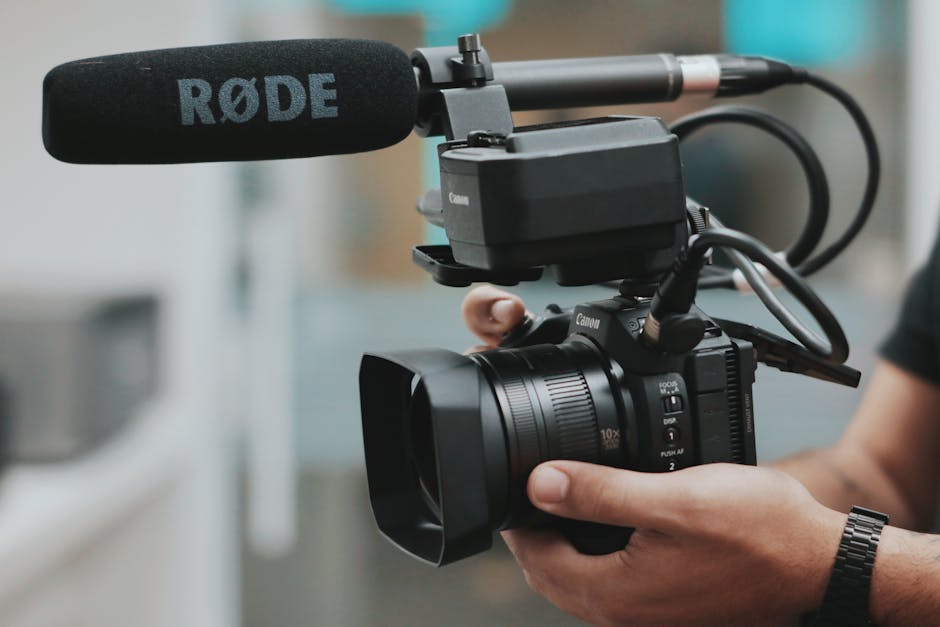EMPOWERING YOUR BUSINESS FOR SUCCESS.
Check out our weekly blog!
And stay up to date on all things video marketing

The Key Differences Between Event Videography and Traditional Video Production
The Key Differences Between Event Videography and Traditional Video Production
by Paravel Creative
Understanding Event Videography
Event videography focuses on capturing live events like weddings, conferences, or parties. It aims to document the event as it unfolds, capturing the atmosphere, emotions, and key moments. Event videographers work in real-time, ensuring they don't miss any important details. They use specialized equipment to ensure high-quality footage that reflects the essence of the event.

The Basics of Traditional Video Production
Traditional video production involves creating videos for various purposes like advertisements, corporate videos, and films. It requires planning, scripting, filming, and editing to produce a high-quality video that meets the client's needs. Key aspects of traditional video production include:
Pre-production phase involves planning, scriptwriting, and organizing logistics.
Production phase includes filming the video footage with professional equipment.
Post-production phase involves editing, adding graphics, and sound design to create the final video.
Traditional video production often follows a structured process to ensure a polished end product that effectively communicates the desired message.
Equipment and Techniques in Event Videography
Event videography requires specific equipment and techniques to capture live events effectively. Here are some key points to understand:
Cameras: Event videographers often use high-quality video cameras with features like stabilization, autofocus, and low-light performance to ensure clear footage.
Audio Equipment: Good sound quality is essential for event videos. Microphones, recorders, and audio mixers are used to capture speeches, music, and ambient sounds.
Lighting: Proper lighting is crucial for capturing events indoors or outdoors. Event videographers may use portable lights or reflectors to enhance the visual quality.
Stabilization Tools: To avoid shaky footage, event videographers use tripods, gimbals, or stabilizers for smooth and steady shots.
Editing Software: Post-production is where the magic happens. Editing software like Adobe Premiere Pro or Final Cut Pro is used to refine and polish the captured footage.
Understanding the equipment and techniques involved can help event videographers create professional and engaging videos that capture the essence of the event.
Tools and Skills for Traditional Video Production
To create traditional videos, you will need a set of tools and skills. Here's what you should have: camera with good resolution, tripod for stability, lighting equipment for proper illumination, microphones for clear sound, and video editing software for post-production. In addition to these tools, you must also have skills like framing the shot, adjusting camera settings, capturing clear audio, and editing footage to create a cohesive final product. Mastering these tools and skills is essential for successful traditional video production.
Focus on Capturing Live Events
Event videography is all about capturing live events as they happen, ensuring every moment is documented professionally and creatively. The key difference from traditional video production lies in the ability to film events in real-time, capturing the essence and energy of the occasion. This style of videography aims to convey the atmosphere and emotions of the event, allowing viewers to experience the event as if they were there themselves.
Emphasis on Storytelling in Traditional Video Production
When it comes to traditional video production, storytelling takes center stage. A compelling narrative is crafted to engage and captivate the audience, drawing them into the message being conveyed. Through storytelling, traditional video production aims to evoke emotions, create connections, and leave a lasting impact on viewers. By focusing on the story, traditional video production sets itself apart from event videography, striving to deliver a more profound and meaningful viewing experience.
Editing and Post-Production in Event Videography
When it comes to event videography, the editing and post-production phase plays a crucial role in bringing the footage to life. This process involves carefully selecting the best shots, adding music or sound effects, and tweaking the colors and lighting to enhance the overall look of the video. In event videography, the goal is to capture the essence of the event and create a compelling narrative that engages the audience from start to finish.
Scripting and Editing in Traditional Video Production
In traditional video production, scripting is essential. It involves planning out what will be said and shown in the video. Editing is another crucial step in traditional video production. It includes combining different video shots, adding sound effects, music, and transitions to create a cohesive final product. Both scripting and editing play vital roles in ensuring the quality and coherence of the final video.
Client Expectations in Event Videography vs. Traditional Video Production
In event videography, clients often prioritize capturing candid moments and emotions during events, focusing on the overall atmosphere of the occasion. They expect a storytelling approach that highlights the essence of the event. On the other hand, in traditional video production, clients usually have specific scripts and scenes they want to be meticulously filmed, emphasizing precision and adherence to the planned narrative. The key difference lies in the client's desire for authentic, spontaneous footage in event videography, as opposed to more structured and controlled filming in traditional video production.
Choosing the Right Approach: Event Videography or Traditional Video Production
When deciding between event videography and traditional video production, consider the following points to help you make the right choice:
Event videography focuses on capturing live events, such as weddings, conferences, or parties, to create a dynamic and engaging video highlighting the event's key moments.
Traditional video production involves a more scripted and structured approach, with pre-planned shots and scenes to tell a specific story or convey a message effectively.
Event videography is ideal for capturing the energy and spontaneity of live events, while traditional video production allows for more control over the final product and can be used for promotional or informational purposes.
Consider the nature of your project, budget, timeline, and desired end result when deciding between event videography and traditional video production for your video needs.
Free Resources
From templates, to social media tips, we've assembled a library of free resources for you to add to your marketing arsenal.
Fill out the form below to download the complete collection.








